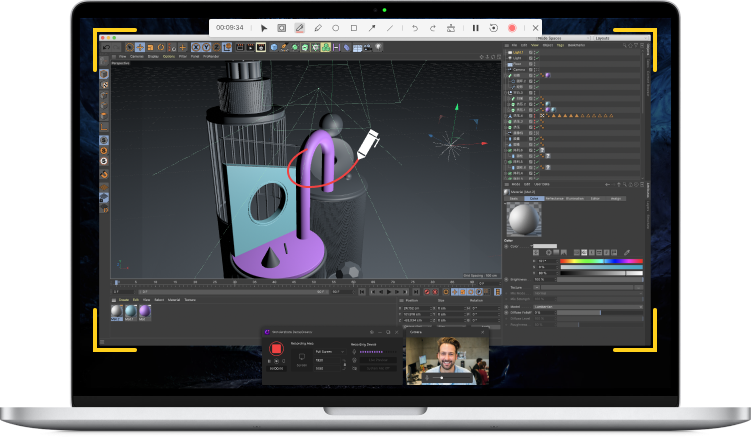What is Distance Learning
As the world changes, so does the way we do everything including how we learn. Although it is not a new concept, distance learning is quickly expanding to include more students and more courses than ever before. In fact, distance learning is quickly becoming the only solution for most people in the current world order and if its benefits are anything to go by, this new way of learning is likely to be with us for the foreseeable future.
But what is distance learning and how can you ensure that you are engaging the right form of distance learning? In this article, we are going to be looking at the concept of distance learning in its entirety. Let’s begin with what distance learning is;
Distance learning is a form of learning where the students and the teacher do not meet in a classroom, but use a variety of tools including email, mail and the internet for the purposes of learning. How these tools are used and how the students attend the remote classes varies widely, depending on the course and the type of distance learning.
Benefits of Distance Learning
It is important to note that even with its myriad of challenges, remote learning has numerous benefits. These include the following;
- Remote learning allows students to study at any university around the world without actually having to travel to the university. This opens up top universities to students who may not have the financial capability to travel for in-person classes.
- You may also find remote learning particularly beneficial to you if you can’t attend classes due to illness, busy work schedules, severe social anxiety and other reasons.
- Remote learning can also be widely affordable. You don’t need to spend on travel and living expenses to attend your university of choice if you choose remote learning.
- With some forms of remote learning, you can set your own learning schedule and in all forms of remote learning, you can review the course material more than once. This makes learning and understating the course material that much easier since you understand your capacity to learn and how many times you have to go through the course material before you can understand it.
How Does Distance Learning Work
Distance learning differs from the traditional learning environment in that the teacher and student are separated physically. Therefore, in this environment, a student can choose the most suitable time for them to attend classes and there are some courses that allow the student to record their interaction with the learning materials for later review.
The way the teacher transmits the course material to the student is also very different from in-person learning. Although, the medium of communication may vary from one school to another or even from one course to another, the teacher will typically schedule chat times for one-on-one interaction with the student. It is during these chats that the teacher will transmit the course material for the student to go through.
The teacher will the set a specific duration that the course will take, usually 5-6 weeks depending on the course and the class. Each week, the teacher will assign topics to be discussed and assignments to be completed. The students will then complete the assignments in their own time and then send them to the teacher via email.
Types of Distance Learning
Remote learning in itself is not rigid and comes in different needs, designed to accommodate the needs of the student. The following are some of the forms that distance learning can take;
- Online Courses
Most schools and universities will offer online classes as a way to compliment in-person classes. Online classes of this nature are designed to add more content to their course and are in no way complete courses. Any student of the class can easily access the online courses on any computer with internet access.
- Hybrid Courses
Hybrid courses combine in-classroom learning with online learning at home. In this form of learning, the students can go through the study material at home on their own time, but also meet for in-person lectures at pre-determined intervals during the course. The amount of time a student can spend studying online at home or at the in-person lectures often depends on the course and sometimes even on the lecturer.
- Conference Classes
In conferencing classes, students and their teacher utilize conferencing software like Skype or Zoom to meet up for class in real time. This can be done either in a group or one-on-one with the instructor. This type of distance learning makes it possible for anyone to attend class in real-time despite distance.
- Correspondence Courses
In this type of remote learning, the student engages with the course material without the presence of the teacher. Any communication between the teacher and the student is done by correspondence only. The teacher shares the course materials with the student via email and the student also shares their assignments with the teacher via email.

The All-in-One Screen Recorder & Video Editor
- Record desktop screen,audio and webcam simultaneously
- Edit videos quickly with a wide range of professional tools
- Built-in plentiful video effects
- Export to MP4, MOV, MKV, GIF and multiple formats
Now that you have an understanding of distance learning and how it works, you can easily choose the type of distance learning that best fits into your life. Keep in mind that there are a variety of different ways to attend a distance learning class and therefore when choosing a class, it is important to take into consideration the duration of the course and the practicability of the course schedule.
For distance learning to work, it must seamlessly integrate into your life. After all, you are choosing distance learning because you want to have time to raise a family, go to work and other aspects and it is vital that the course doesn’t interfere with these other aspects or you may find it hard to continue with classes.

 Secure Download
Secure Download

